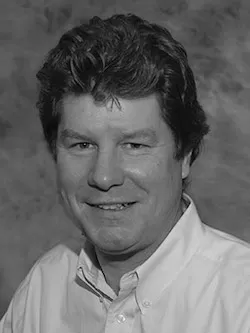Cosmology: The History and Nature of Our Universe
Mark Whittle
18:29:32
Description
Evidence for the birth of the universe is raining down on you. It's called the cosmic microwave background, and it's had quite a journey. Born in the stupendous annihilation of matter and antimatter seconds after the big bang, trapped in the hot plasma of the expanding universe for 380,000 years, and then suddenly released when the universe cooled to the point that atoms could form, this echo of creation has been on an uninterrupted voyage through space for 13.7 billion years—until it reached you. The cosmic microwave background is just one of the many clues about the history and nature of our universe that make the science of cosmology a wondrous, fascinating, and philosophically profound field of study.
Cosmology: The History and Nature of Our Universeintroduces you to the biggest story of all in 36 half-hour lectures that cover the origin, evolution, composition, and probable fate of our universe. This detailed and accessible course, presented by award-winning Professor Mark Whittle of the University of Virginia, incorporates more than 1,700 stunning illustrations.
The Perfect Time to Learn Cosmology
An expert on the dynamics of supermassive black holes at the cores of galaxies, Professor Whittle is an astronomer with a gift for making his subject vivid, understandable, and awe inspiring. For example, in explaining the vastness of the universe, he asks you to imagine yourself as a stupendous giant making billion-light-year strides through the cosmos, hour after hour. Even at this ultra-warp-drive pace, you would always find yourself in the middle of a uniform mist of galaxies with no end in sight.
Professor Whittle notes that we are the first generation ever to know in detail just how the universe came to be. Right now is the perfect time to learn cosmology, since researchers have just completed the work on more than a decade of breathtaking discoveries. The picture they have assembled is truly stunning in its richness and coherence and includes such findings as these:
- The universe began 13.7 billion years ago in a hot big bang.
- The geometry of the universe's space is "flat," supporting the theory of a cosmic origin in a rapid, inflationary burst of unimaginable speed.
- Ripples frozen in space at the instant of inflation formed the seeds from which galaxies and all later structure grew.
- The universe will expand forever at an accelerating rate.
Take an Intimate Look at the Universe
Einstein famously said, "The most incomprehensible thing about the universe is that it is comprehensible." As Cosmology shows, the universe is comprehensible at a remarkably deep level in simple, intuitive terms. As the course unfolds, you are introduced to the major clues that have gone into deciphering the mystery of the cosmos. Some of these clues involve concepts at the cutting edge of astrophysics, such as dark matter, dark energy, and cosmicinflation. Professor Whittle introduces these and many other ideas with inventive analogies and then builds on his explanations.
For instance, one of the most extraordinary aspects of the cosmic microwave background is that it tells us the universe was ringing with sound during its first 380,000 years. It took a satellite measuring minute fluctuations in the microwave background to disclose this property of the early universe. But the story does not end there because scientists can say a great deal about this primordial sound and what it means:
- Was it loud? Variations in the microwave background indicate that the sound was the approximate decibel evel of front-row seats at a rock concert. (Professor Whittle picks Pink Floyd as a suitably deafening example.)
- What's the pitch? The primordial sound was 50 octaves lower than the range of human hearing. Just as larger organ pipes make deeper notes, so the universe's "pipes" are cosmic in size and make extremely low notes.
- Was it musical? As you hear in Professor Whittle's different re-creations of the primordial sound, it had a harmonic complexity with a quality somewhere between a musical note and noise.
- What does it tell us? The primordial sound included pressure waves destined to grow into the largest structures in the universe.
At Home in the Cosmos
There is also much to see in Cosmology. In addition to showing magnificent telescopic images, Professor Whittle illustrates his lectures with hundreds of informative diagrams, together with computer animations from NASA and other sources that give a three-dimensional perspective on the universe. You take a tour of our local supercluster, watch galaxies collide, and see "rivers" of galaxies flowing toward pockets of invisible dark matter, among other compelling simulations. Such a comprehensive, in-depth presentation is only available with this course and not in any classroom, book, or documentary.
Professor Whittle enriches his lectures with a number of simple equations, such as Hubble's Law. But you don't need to follow the math in detail, since he always restates what's going on in plain English. Indeed, Professor Whittle suggests that we may be hardwired to understand the universe at an intuitive level, since we evolved on a planet embedded in an astrophysical setting and subject to the same laws of physics that apply throughout all of space and time. We are truly at home in the cosmos.
Prepare to Be Surprised
Nonetheless, prepare to be surprised by some of the startling ideas you encounter in Cosmology:
- Matter and energy are only the positive side of reality. There is an equal and opposite negative side that resides in gravitational fields. Together they sum to zero, implying that the universe came from nothing.
- The annihilation of virtually all matter by antimatter just after the big bang means that every proton and electron in your body has survived a game of Russian roulette with a billion bullets and one blank.
- Dark energy has the crucial property of making the universe fall outward, rather than inward, which is why the expansion of the universe is accelerating.
- Our universe may be only one of many, in what has come to be called the multiverse. If each of these universes has different laws of physics, we should not be surprised that at least one—ours—happens to have the parameters that are conducive to life.
Looking back on the wealth of recent discoveries about the universe that are covered in this course, Professor Whittle can hardly contain his excitement. "I wouldn't be surprised if 500 years from now, these two decades will be seen as a period of breakthrough, not unlike the periods of discovery we associate with names like Copernicus, Newton, Darwin, or Einstein. ... One might say that right now is when cosmology has finally come of age."
More details
User Reviews
Rating
Mark Whittle
Instructor's Courses
The Great Courses
View courses The Great Courses- language english
- Training sessions 38
- duration 18:29:32
- English subtitles has
- Release Date 2023/04/27























